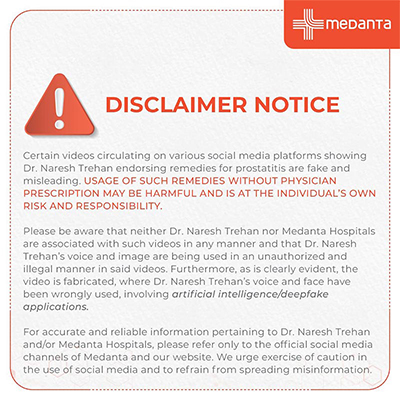ICU Care From Anywhere? The eICU Revolution Explained

An intensive care unit is a hospital-based unit that offers round-the-clock critical care to patients needing life-saving measures. Traditional ICUs have limitations, such as a lack of intensivists and the high cost of keeping a fully staffed unit or high-intensity staff all of the time. Hence, the eICU is an alternative and innovative approach that revolutionises care delivery. In this blog, we’ll discuss everything you need to know about eICUs.
What Is the eICU?
An eICU, also called a tele-ICU or virtual ICU, utilises technology to monitor critically ill patients in hospital ICUs. This is due to an actual ICU being physically distant from the patient's location, with intensivists stationed at a centralised facility equipped with advanced monitoring systems. The process involves the following steps:
- Real-time data transfer: Securely transferring data from bedside monitors, including vital signs, lab results, ventilator settings, and medication administration, to the eICU centre in real-time.
- Remote monitoring: A team of intensivists and skilled nurses stationed at the eICU central continuously monitor this data to provide instructions to bedside caregivers.
- Communication between eICU and bedside: High-resolution cameras and microphones enable apparent conversation between the remote team and bedside staff to discuss therapy choices and immediate interventions.
Benefits of the eICU Model: A Win-Win for Patients and Hospitals
The eICU model offers significant advantages for both patients and healthcare institutions:
- Improved Patient Outcomes: Studies have shown that eICU care can lead to better patient outcomes, including reduced mortality rates, shorter hospital stays, and fewer complications. This is attributed to the continuous monitoring by experienced intensivists and the ability to intervene promptly.
- Increased Access to Specialty Care: In hospitals with limited ICU resources or in geographically remote locations, eICUs bridge the gap by providing access to specialised critical care expertise that might not be readily available on-site.
- Enhanced Bedside Care: The eICU team acts as a valuable support system for bedside nurses, offering guidance and expertise, allowing them to focus on providing direct patient care.
- Cost-Effectiveness: By optimising staffing and resources, eICUs can lead to significant cost savings for hospitals. Additionally, shorter hospital stays due to improved outcomes translate to lower overall healthcare costs.
- Reduced Length of Stay: Studies have shown that eICU implementation can lead to shorter lengths of stay for critically ill patients. This translates to cost savings for hospitals by freeing up ICU beds for new patients and reducing overall healthcare utilisation.
- Lower Mortality Rates: Improved patient ICU monitoring and earlier intervention can lead to reduced mortality rates in ICUs. This not only translates to better patient outcomes but also reduces the associated costs of patient care.
- Optimised Resource Utilisation: By providing support remotely, eICUs can help hospitals avoid the need for expensive on-site ICU infrastructure and staffing. This allows for more efficient resource allocation within the healthcare system.
- Improved Workflow Efficiency: The eICU team can assist with tasks like medication reconciliation, protocol adherence monitoring, and documentation, alleviating some of the workload for bedside staff. This allows them to focus on providing hands-on care to patients, improving overall workflow efficiency within the ICU.
- Reduced Stress and Burnout: Working in an ICU can be a high-pressure environment. The support and guidance from the eICU team can help alleviate some of the stress and burden on bedside staff, potentially reducing burnout rates and improving job satisfaction.
- Bridging Geographic Disparities: Hospitals in remote locations or those with limited resources may not have access to in-house intensivists. eICUs bridge this gap by delivering critical care expertise remotely, ensuring that patients in these locations receive the specialised care they need.
- Improved Equity in Care: eICUs have the potential to level the playing field by offering access to high-quality critical care regardless of a patient's location. This promotes greater equity in healthcare delivery and ensures that patients in underserved areas have access to the same level of expertise as those in major medical centres.
The eICU Team: Expertise at Your Fingertips
The core team of an eICU centre comprises:
- Intensivists: These critical care physicians are the backbone of the eICU, providing continuous ICU monitoring, analysing patient data, and formulating treatment plans.
- Critical Care Nurses: Experienced nurses in the eICU centre collaborate with the intensivists and bedside staff, ensuring seamless communication and facilitating care coordination.
- Technical Support Staff: A team ensures the smooth operation of all technological aspects of the eICU, guaranteeing reliable data transmission and secure communication channels.
The Future of Critical Care: Embracing Innovation
The eICU model is a rapidly evolving field with ongoing research and development. As technology advances, we can expect to see further integration of:
- Artificial Intelligence: AI algorithms can analyse patient data to identify early signs of deterioration and suggest interventions, further enhancing the efficiency of eICU care.
- Telepresence Robots: Robots equipped with cameras and microphones could allow for more immersive remote interaction with patients, enabling a more hands-on approach.
- Advanced Analytics: Real-time data analysis can provide valuable insights into patient trends and treatment effectiveness, leading to even more personalised care plans.
Addressing Concerns About eICUs
While eICUs offer significant benefits, some concerns exist:
- Technology Dependence: Reliance on technology raises concerns about system failures and potential data breaches. Robust security measures are crucial.
- The Human Touch: Some may worry that remote ICU monitoring might compromise the crucial human connection between patient and physician. Effective communication strategies are essential to address this concern.
- Cost of Implementation: Setting up an eICU infrastructure requires investment. However, the potential cost savings associated with improved patient outcomes can offset these costs.
Final Thoughts
The eICU model presents a groundbreaking approach to critical care delivery. By leveraging technology and expertise, eICUs can enhance patient care, optimise resource utilisation, and improve outcomes for critically ill patients. As the technology continues to develop, eICUs are poised to play an increasingly vital role in the future of healthcare, ensuring high-quality critical care is accessible to everyone, everywhere.
If you’re looking for a world-class Critical Care Unit, then visit a tertiary-care hospital as soon as possible!






